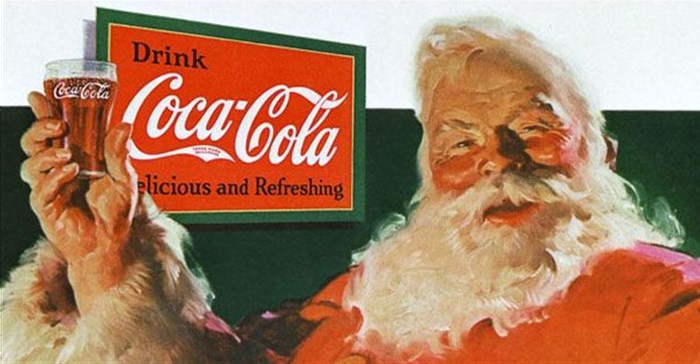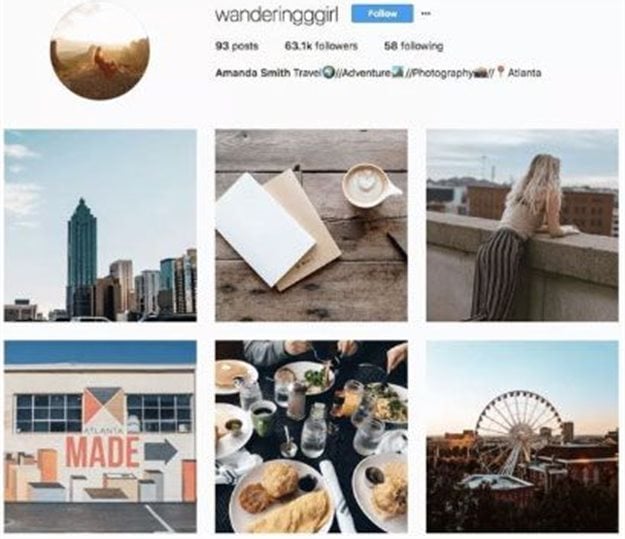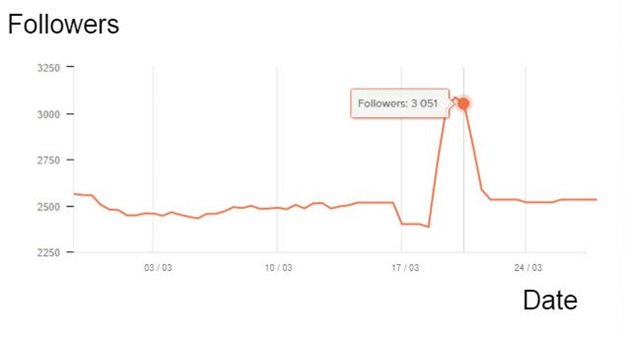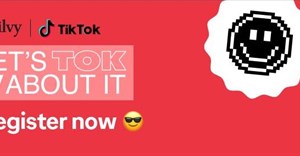Trending





 Era of first-party data dawns as the data cookie crumblesLindsey Schutters
Era of first-party data dawns as the data cookie crumblesLindsey Schutters
#YouthMonth: How to spot fake influencers on social media

Dods began with a warning that fake influencers are everywhere today. Without the right help, it can be virtually impossible to tell them apart from real influencers. That’s because these social media users artificially increase their following and engagement to mimic real influence.
As an industry, influencer marketing is currently worth $3bn, with this figure expected to double in the next year. So Dods feels it’s safe to say influencer marketing isn’t going anywhere any time soon. But there are people out there exploiting the industry and the money brands are putting into it.
Influencer fraud and fake influencers have become quite a phenomenon of late. It's increasingly hard to spot at the surface level as their accounts often look like those of genuine influencers, with perfectly edited photos and a follower count to match.
But often those followers have been bought, and bots don’t care which brands the ‘influencer’ promotes, so the so-called engagement is fake.
That’s not to say all of influencer marketing is a fraud, though…
Influencers over the years: From Santa Claus to George Clooney to bots
To really understand the power of influencer marketing, Dods briefly backtracked to share an example of one of the first-used cases of influencers – Coca-Cola, featuring Santa Claus in a number of campaigns as far back as the 1920s.
His red-and-white suit perfectly matched Coca-Cola’s label, and Coca-Cola apparently made for a much better midnight snack for Santa than milks and cookies.
More recently, influencer marketing has included celebrity ambassadors like George Clooney for Nespresso, Jennifer Aniston for Emirates and Tiger Woods for Nike.
But today, fictitious heroes and celebs that promote all and sundry no longer cut it.
The rise of micro-influencers has placed a much bigger emphasis on influencers inciting action, rather than influencers as a status.
By definition, an influencer is someone who – no matter their vanity metrics, like likes, followers and comments – is able to successfully change the opinion of their followers, or drive them to take action.
Dods says if you spend as much time on Instagram as she does, you would have seen the below picture before.
They had this photo taken of them at the hotel pool, and the hotel owner said that within the next year, 80% of their guests claimed their visit was a result of having seen the post on Instagram.
This sparked a wildfire of collaboration between travel influencers and the hospitality industry, and it quickly became apparent to brands and businesses in other industries that this was a highly effective form of marketing. But of course, it also become an easy one to manipulate.
On the flip side of the story is @WanderingGirl – the famous fake Instagram account, went viral last year, when it came out that it had been purposely made to denounce the growing issue that brands need to be aware of, of fake Instagram influencers.
The account, owned by company Mediakix, which ran the experiment, both reached out to and were approached by brands, offering everything from clothing and cash to high-end dinners and vacations at beautiful five-star hotels all over the world.
While this showed brands how easily we can be fooled and how careful we have to be, it also shows social media platforms that accounts like Wandering Girl’s were slipping through the cracks by the thousands.

As a result, the main social media platforms have been putting in big efforts to stop the recent surge of fake influencers and bots. For example, Instagram is continuously updating its algorithm to stay ahead of them.
But, there will always be those who find a way to cheat the system.
For instance, since the algorithm's change to automatically detect when users had no profile picture or user names ending in several numbers, it’s marked them as bots and banned thousands of accounts. As soon as people realised what Instagram was doing, they changed their accounts to more realistic profile pictures and user names and even added a few Shutterstock pictures to their accounts, which have been liked and commented on by other bots, exactly like them...Buying followers and joining comment pods
Then, Instagram changed to algorithm again to favour longer, quicker comments, meaning the more comments your post gets within the first hour of publishing, and the more words each comment has, the more likely that Instagram would see it as engaging.
Comments that consisted of the generic ‘Great post’ or ‘Amazing’ or the thumbs-up emoji were seen by Instagram as spammy, and accounts that did this too often were blocked.
And so, the Instagram comment pods were born. These are chat groups, usually on Messenger or Telegram, where users drop the link to their posts and everyone in the group likes and comments on it within the hour, with more than five words per comment.
There are hundreds of thousands of different groups for different purposes, such as ones for just fashion or business accounts, with others only for likes – the list goes on.
You simply add a comment to the previous 10 people’s posts dropping your own link to receive the same type of comment. The fact is, when you then look at this person’s profile, it will be flooded with likes, followers and long comments, but it’s not a real audience at all.
Buying followers and joining comment pods costs little to nothing and can imitate immediate engagement. So when you look at a fake influencer’s profile, it may very well be flooded with long comments, but there’s no real connection to the audience. If you hire such an influencer or send them products to promote, they’re not actually influencing anyone to go out and buy that product.
Six quick, practical ways to check whether social media influencers are true or fake
First, check if the account is verified. Instagram hasn’t let anyone slip through the cracks with this one – if it’s a verified profile, you’ll see the little blue tick verification badge, usually for accounts of high status, official accounts for big brands, sport stars, politicians and celebrities.
There’s no way that a verified account doesn’t have influence over its audience, as verification ticks are reserved for power users. But what about micro and nano influencers?
That’s where Dods’ second fail-safe check comes in, as it applied to all influencers, from micro to power – community growth tracking.
The quickest way to check this is if you have a substantial following. It’s often what brands look at when choosing who to work with and can also mean decent engagement. But as a following can be bought quickly, easily and inexpensively, rather track the account’s growth for a better idea of its authenticity. If the account shows an overnight spike in its following, those followers may well have been purchased.
Dods says to also examine the quality of the account’s followers. If there’s a lot of dormant accounts, these are also likely to be fake.

Dods deduces that the above account bought about 1,000 followers around 20 March.
Her third tip is to check the engagement rate. This is the proportion of likes, comments and shares with their following. The average Instagram like rate is between 1% and 5%, depending on overall amount of followers.
So if someone has 1,000 followers, you’d expect between 10 to 50 likes per post. To calculate the engagement rate of a profile, divide the number of interactions on a recent post by the number of subscribers in their account, and multiply by 100 to get a percentage.
The fourth step is to check the quality of comments they receive. These can be artificially created, too, but if the comments under someone’s photo include conversations, people tagging their friends or asking genuine questions, this is much more telling of an authentic following.
For example, food and fitness instructor @Candibod frequently asks questions in her captions so her followers can answer in the comment section, and spark conversation and debate.
The fifth important part of determining fraudulent from genuine social media users is to look at true reach. The actual reach of an influencer is how many people see their posts.
If an account is mostly followed by bots and inactive users, its posts will be seen by very few people and have a low audience net worth. So if someone has thousands of followers but their true reach shows a lot less, this would suggest that they’re a fake influencer.
The sixth and final step is to examine audience insights for network impact, through demographics like average age, dominant gender, primary interests, the most relevant hashtags the influencer uses to reach their audience, their estimated average income, as well as top countries and cities.
If your product is only available locally, it won’t help to choose an influencer where the bulk of their audience is based overseas.
Now that you know how to spot fake influencers, Dods says it’s worth noting that the most used channels brands use to find influencers, such as Instagram, Facebook, YouTube and Twitter, are constantly changing. There have been frequent changes to the algorithms that run these platforms, which in turn changes trends and behaviour online.
So if you’re in the digital, communications or social space, you need to make an active effort to stay on top of these changes to understand how they’re affecting your brand’s social media marketing efforts.
Visit the Meltwater press office for the latest insights, and click through to the following #BizTrends2019 articles for a refresher on current social media marketing trends…




















